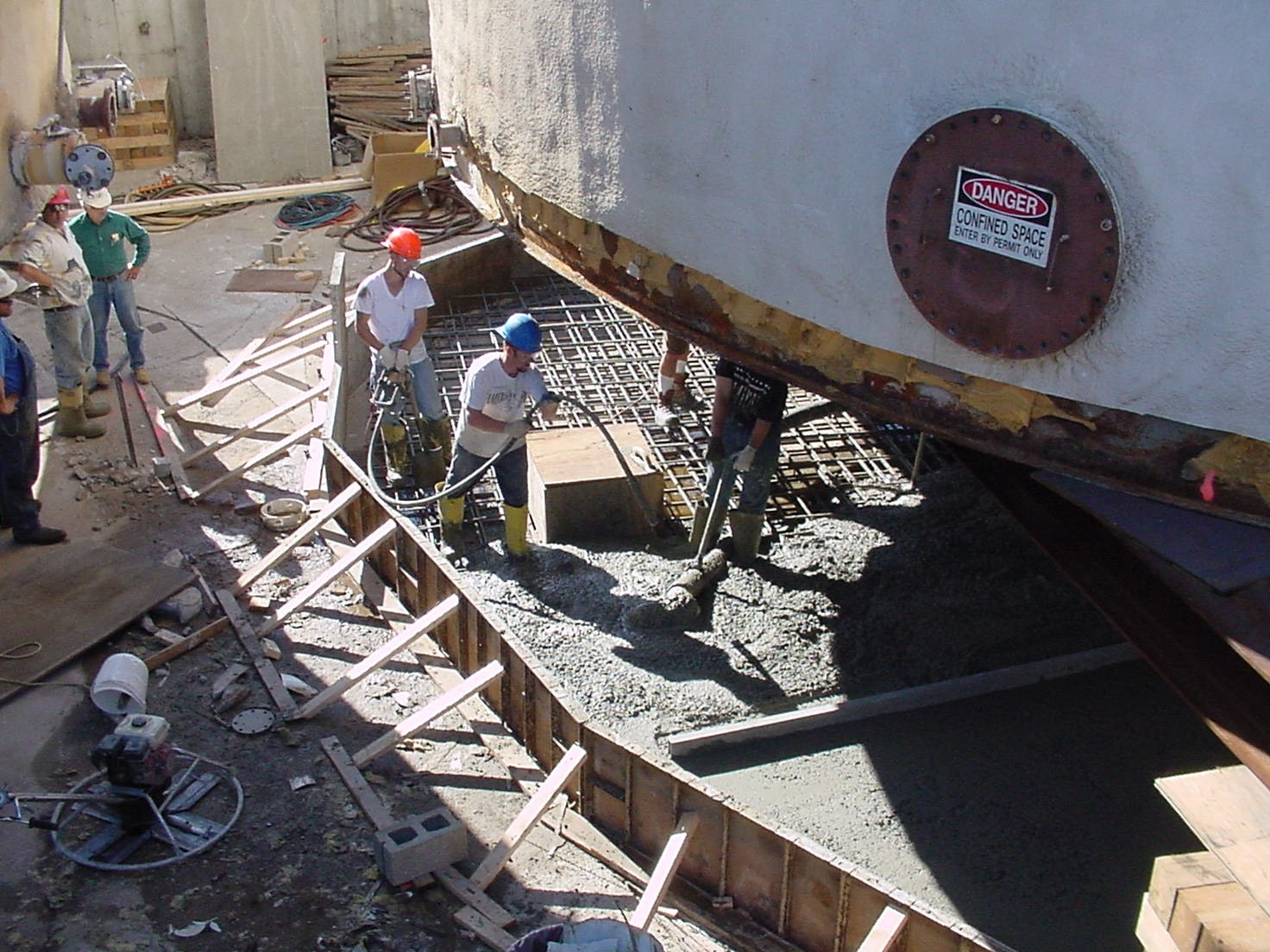Why spend money on temporarily repairing a faulty tank, knowing that it’s going to have to be repaired again soon? Why not just fix the cause? American Petroleum Institute. 650 and 653 only give general guidelines to what type of foundation can be used. These are evaluated on the bases of:
When built on good foundations, tanks have lasted 50 years or more
Our Method
A.R. Watson uses an elevated, compacted, crushed rock foundation with an corrosion prevention asphalt cap (built like a road) for above ground storage tank foundations.This raised foundation has been put to the test and has lived up to its design flawlessly after years of use.It is becoming widely accepted by many American and European companies as the industry standard.
The Standard
A.R. Watson uses an elevated, compacted, crushed rock foundation with an corrosion prevention asphalt cap (built like a road) for above ground storage tank foundations.This raised foundation has been put to the test and has lived up to its design flawlessly after years of use.It is becoming widely accepted by many American and European companies as the industry standard.
Problematic Foundations
Some foundation failures are caused by:
Oiled Sand: In some cases when oiled sand has been used nature has done its work and eaten the sand clean of the oil.This can reduce the resistance of the sand and this condition has proven to accelerate corrosion.
Cathodic Protection: Cathodic protection must be designed and installed by experienced contractors or it may result in accelerated corrosion of the tank floor.Any change in the amount of moisture in the foundation will cause the resistivity of the soil to change and this may result in the Cathodic Protection failing.
Concrete: If the steel tank floor is in contact with concrete, the moisture in the concrete and the galvanic action between the dissimilar metals will, over a period of time, cause the steel to corrode at an accelerated rate.
Double Steel Floors: The double bottom method, developed in the 1980’s as the only viable secondary containment method, has failed in a number of cases.With the old steel floor and a new steel floor spaced apart with sand or concrete, the oxygen and moisture make a perfect battery cell and the new floor becomes the sacrificial anode.Some new floors have lasted as few as 4 years.The new steel floor corrodes at a rate four times faster than the old floor.Attempts have been made to reduce this effect with the installation of liners and in some cases, the liners have failed.
NDT inspection: This method has limitations and flaws, it cannot inspect 100% of the tank floor. It cannot inspect the critical zone around the shell to annular weld, lap joints, under the roof columns, and sometimes packed rust shows up as good metal.
Other reasons that attribute or cause tank bottoms to fail are:
• Settlement of the tank below ground moisture level
• Tank shell edge settlement below ground moisture level
• Rotten wood piles and leveling pegs left in the foundation
• Moisture in the foundation unable to get out
• Deteriorating concrete ring wall
• Pumped concrete grout under tank floor
• Poorly constructed or inadequate tank foundation material
• Welder sweepings under tank floor sheets
Corrosion Triangle
If all elements are present then corrosion can occur.
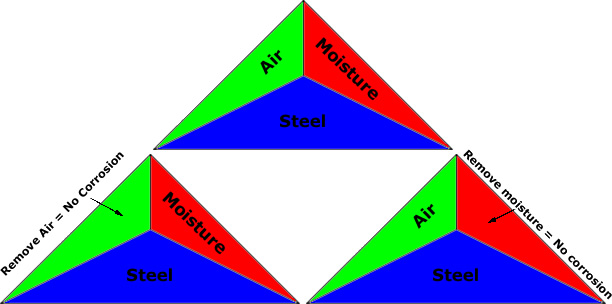
Proper Foundations
The height of the foundations should be a minimum of 8 inches between the lowest point of the tank steel floor and the dike ground level.
From the edge of the tank floor, the foundation must slope away to prevent moisture from draining back under the tank.
The use of asphalt between the top of the foundation and the underside of the tank floor acts as a corrosion prevention barrier to seal out any moisture from reaching the underside of the tank floor.

A containment membrane can also serve as a barrier to prevent any moisture and corrosives from permeating upward from the ground.
Drainage pipes in the foundation help to keep the foundation dry and also serve as leak detection pipes.
We have identified some of the problems with above ground storage tanks and have discussed the importance of a good tank foundation.Proper investigation and construction methods at the time of the new tank construction or repair will assure a long and error free service life.The “Watson Air Lift Technology” allows the tank operator to inspect 100% of the tank underside bottom and quickly identify and correct problems cost effectively, greatly reducing out of service time.
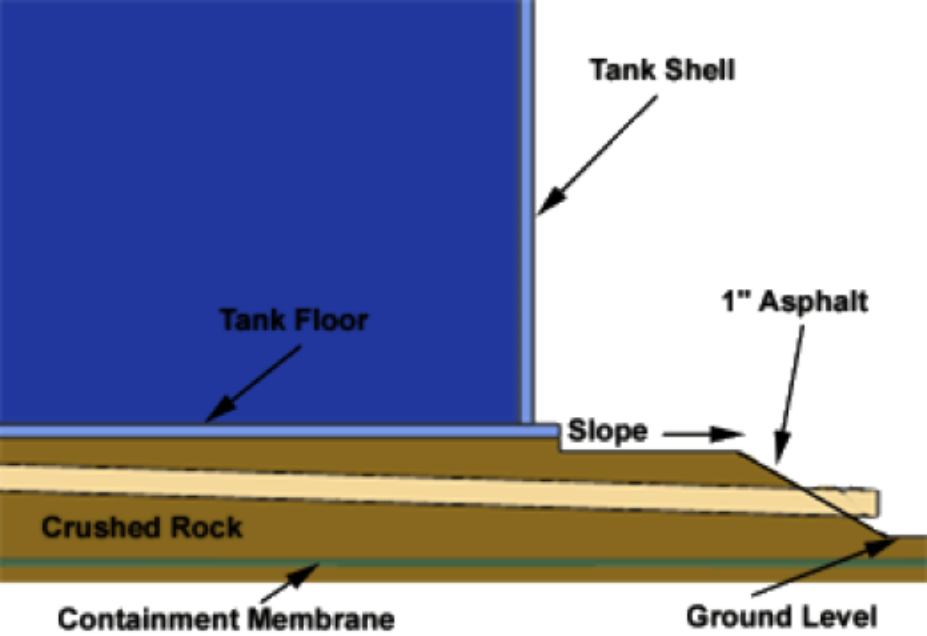
Damaged Tanks
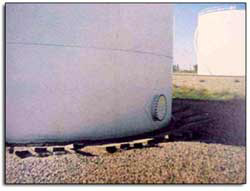
Timber railway ties are laid under the tank’s shell.

Rusted steel on concrete ring wall.

Concrete ring wall is sloping inward, causing water to run under the tank.
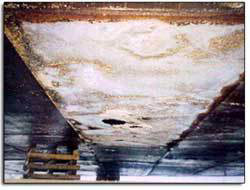
Faulty cathodic protection caused accelerated corrosion
